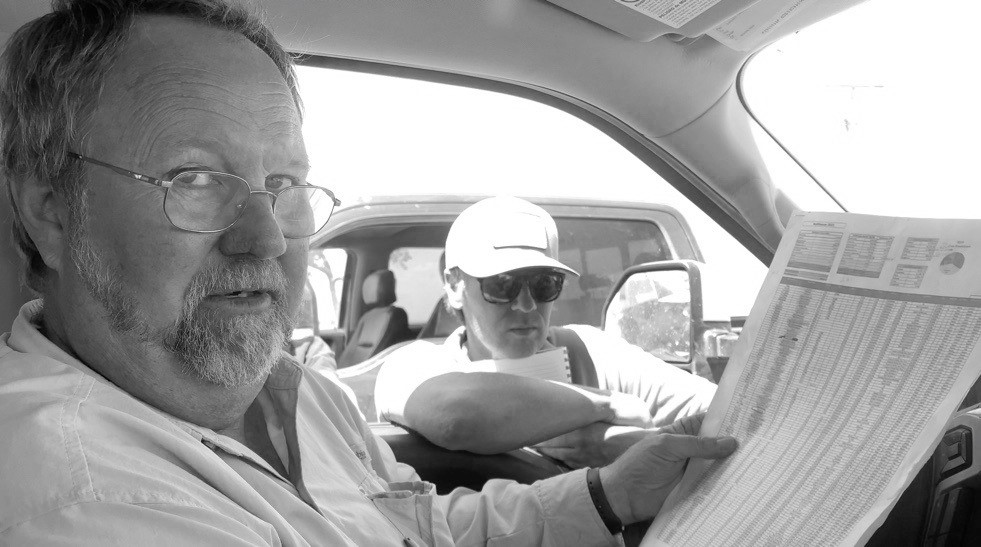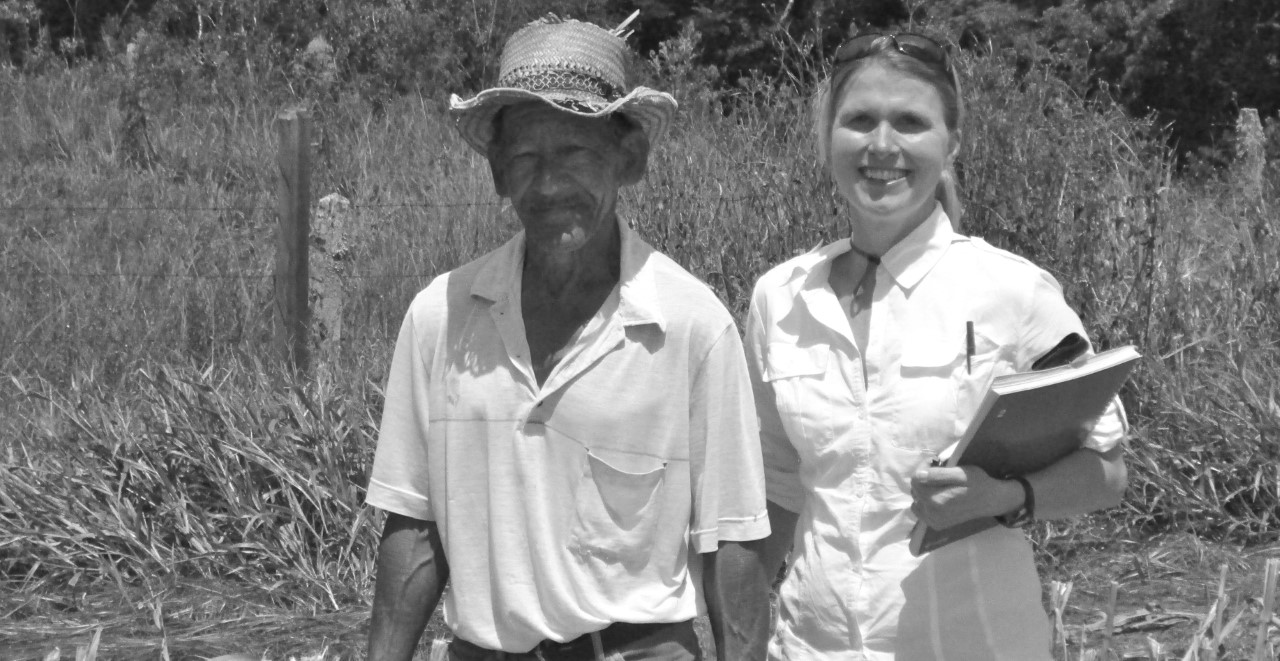
By Mary Ann Smith-Janas, President, Marketry, Inc., Birmingham, Alabama, masj@marketryinc.com
In the Amazon streaming series Clarkson’s Farm, the UK’s Top Gear host, Jeremy Clarkson, takes over the management of his farm. While the series is mostly comedic, it does illustrate one of the great accomplishments of the last century—the professionalization of the global agricultural industry.
In previous generations, a farmer without any knowledge or experience would have utterly failed. But today, Clarkson can mitigate his inexperience by taking advantage of modern resources. For example, he’s invested in German and Italian equipment technologies. He’s also surrounded by neighboring farmers and consultants who work hard to teach him the innovations and efficiencies that contribute to a successful operation.
Like Clarkson’s Oxfordshire, U.S. agriculture is also being transformed by the professionalization trend. The strength of U.S. agriculture used to be a widely distributed and decentralized system of small farms. However, since 1980, there has been a huge increase in consolidation and centralization. Farms in nearly every commodity and livestock category have grown larger. Meanwhile, the number of distinct farming operations has fallen by 16.7 percent in this period.1
In this article, I’ll explain how the Ag industry’s transformation is generating new opportunities for qualitative researchers. I’ll also explain the essential methods and skills required to successfully compete for project work in the near term.
Importantly, I could not have written the following without the inspiring conversations and generous contributions from several agriculture experts I interviewed for this article. (Please note: Most of the experts requested that their company and identity remain private.)
Key Challenges for U.S. Agriculture
Farm Labor Shortage
According to the July 2021 update of the Purdue Center for Commercial Agriculture Ag Economy Barometer report (2021), nearly two-thirds of the farmers surveyed said they either had “some” or “a lot of difficulty” in hiring adequate labor. Only one year earlier, just three out of 10 respondents reported this level of difficulty.
Rising Costs
According to the U.S. Department of Agriculture’s (USDA) Farm Sector Income & Finances report, farm production expenses for 2022 were expected to increase by 17.8 percent, representing the largest year-to-year dollar increase on record. The rise is outpacing high inflation due to a confluence of factors, including transportation costs, interest expenses, and the spike in fertilizer prices, which has been triggered largely by sanctions on the major fertilizer producers—Russia and Belarus.
Globalization
In an article on the impact of globalization on U.S. Ag, Time magazine2 quoted the chief economist from the American Farm Bureau on problems with agricultural products flooding the market and bringing prices paid to farmers down: “Globalization brought more farmers into the international market for crops, flooding the market with soybeans and corn and cattle and milk, and with increased supply comes lower prices. Global food production has increased 30 percent over the last decade,” according to John Newton, chief economist of the American Farm Bureau. “If that’s a good thing for feeding the planet, it also reduces what comes back to producers, whose costs don’t fall with prices.”
Adapting to Challenges: The Professionalization of U.S. Agriculture
While the above challenges seem daunting, technology is offering some effective solutions.
Automation Solves for Labor Shortages
As labor becomes more costly and less available, manufacturers and other companies are racing to develop automation, robotics, and artificial intelligence (AI). Automated machinery can take care of the more mundane tasks on the farm (even milking cows), freeing up extra time for farmers to focus on more complex tasks or take a break.
Technology Boosts Sustainability and Profits
Technology is revolutionizing farming and allowing farmers to be more productive and sustainable. Precision farming (“smart farming”) can help farmers quickly identify and address issues like weeds, pests, and other challenges by using sensors and machines. Advanced irrigation systems can help farmers save water by monitoring soil moisture. Drones and other aerial imaging can give farmers an overhead view of their fields. The Internet of Things (IoT) can help farmers automate and track their operations. By using technology, farmers can reduce their reliance on chemicals and water, increase crop yields, and protect fragile ecosystems. As technology continues to evolve, the possibilities for farmers to become more efficient and sustainable grow exponentially.
Qual’s Main Role: Better Innovation-related Decisions
The above challenges clearly require innovation, but the risks of poorly performing initiatives are huge. Most farms are a single bad season away from going out of business.
Qualitative market research is critical for identifying the real problems and pain points farmers face and what innovations have the best chances for success.
That’s why qual research is in such high demand today by equipment manufacturers and seed, chemical, and technology companies. An industry business analyst explains, “The Ag industry, for all those who are involved, is a rewarding way of life, but also a high-stakes, high-responsibility, burdensome way of life as well. Farmers crave new technology to make their way of life easier, but new technology has to actually break even and be more profitable for the farmer. Ag industry companies need help from research vendors to actually find what problem the farmer has, so we can build a solution to meet that need.”
Another adds, “What’s at stake is so much bigger compared to a lot of other technologies. If your gaming app that’s really cool doesn’t work, yes, it’s a problem. If your sprayer doesn’t work, then you have ruined land, profits, and maybe your future. There’s so much more at stake when we ask them to take a leap (on new technology or products).”
One equipment manufacturer expert values the role that marketing research plays in building their brand for the future. “The Ag industry is being flooded with new technology, but sometimes new technology doesn’t solve a customer need. Marketing research lets us hear the problems the customer has. Then we can build tech to solve that need. It’s a lot less risky than building the new tech just because we can.”
Changing Demographics of Ag Respondents in Qual
According to the USDA, the majority of farmers are men from the Baby Boomer generation, with an average age just shy of 60. Like the rural communities they inhabit, they tend to be disproportionately Caucasian.
However, there’s been a notable rise in farmers younger than 35 years old, and most new producers have at least one female decision-maker in the farm’s management. The industry has also seen increasing levels of education and technological literacy, reflecting the changing demographics in rural America.
Ultimately, the implication for Ag researchers is evolving recruitment from current leaders of the farm to include more of the up-and-coming generation. Here are some key criteria to consider:
First, it’s important to remember that not all “farms” are the same. From a half-acre backyard in the suburbs of a major metro to thousands of acres in the heartland, the size of a farm can vary greatly. The types of crops also vary greatly. While some farms are growing and thriving, others are merely surviving.
Each of these factors has a massive influence on the farm’s need for innovation and professionalization. Therefore, accurately collecting these criteria when qualifying participants is critical to helping clients gather insights.
Tips to Ensure Recruiting Accuracy and Success
Collaborate with a Specialist Recruiter
Recruiting partners is always critically important to a successful qual practice; this is even more true for Ag research. Reach out to specialized recruiters you will find in GreenBook and Quirk’s, such as Revelations Research Solutions, Klein Market Test Inc., and CFR.
Consider Using Customized Panels
With their Ag Access insights community with over 400,000 people, one company, CFR, has established relations to help researchers target respondents with specific equipment ownership, operation type, and occupation details.
Be Creative
Quick online searches and hashtag searches on social media can produce great yields. Need recent tractor purchasers but have no list? On Instagram and Facebook, local dealerships often thank new customers by name and show them with their new equipment. Looking for organic farms across the U.S.? You can find members on organicfarmersassociation.org or in articles like Food & Wine’s “The Best Farms in Every State.”
Avoid the Busiest Times of the Year
The USDA website or statewide cooperatives provide calendars to help you plan your research around planting and harvest times.
Ideal Methodologies for This Unique Respondent Group
Working on this article, I reached out to client-side industry experts to hear about the best approaches to collect and tell the farmers’ stories to their organizations. Their responses point to the full toolkit of qualitative researchers.
Telephone Interviews
When it comes to conducting Ag research, telephone interviews remain a popular choice due to the work with early hours, late nights, and geographic spread of many farms.
Video Interviews
The addition of a video element to these interviews can greatly benefit everyone involved. Through visual observation, moderators can read subtle cues in the body language or environment of the interviewee that are often lost over the phone. Additionally, video can capture the facial expressions or physical reactions of the interviewee as they discuss certain topics or questions.
In the words of one client-side researcher, “Boy, do we love video because it is so much more compelling. Anytime we can add media to something is good.” So, why not leverage the power of video to make your next interview more authentic and engaging for all parties? With the right technology, you can make a big impact.
On-farm Ethnographies, Virtual Ethnographies, Focus Groups
Another client-side business analyst explains that getting as close as possible to farmers, whether through ethnographies or virtual self-ethnographies and focus groups is critical for his stakeholders.
“When our corporate team members sit in an office and try to solve problems for our customers, we often do so with bias and with our own experiences that are most likely one, two, or three decades or more in the past. Additionally, corporate teams in the Ag industry are often global, and many of the team members do not know how farming is done in different regions around the world. To be able to go out and observe the participant and learn directly from them on their property is one of the best methods for us to discover and begin to solve problems for the customer. As a brand in the Ag industry, we sometimes want to hear from the customer, and we want them to think about problems and begin to generate ideas of how they think they could solve them.”

Ongoing Advisory or Discussion Groups
Ongoing advisory or discussion groups (longitudinal research) are another great way to build a relationship and to gain rich information about the market and the farmers. This type of research focuses on gathering data over an extended period, say from planning and planting to harvesting the soybeans, with the aim of understanding changes, trends, and developments over time.
You can track the successes and failures of the farmers, as well as identify any new needs, wants, or concerns they might have along the way. In a recent project, a soybean farmer stood in the same spot in a field every month to capture a video that shared the journey—how the crop was growing, what they were doing, how he was feeling, what he struggled with, and what came next. We saw stormy nights with too much rain, infestations that needed treatment, and, in the end, a crop yield that was the highest in the farm’s 40-year history.
Regardless of the methodology chosen, it’s important to ensure that the farmers feel comfortable and relaxed. Pay attention to their body language and facial expressions to get an idea of their level of comfort and understanding. Ask them to provide examples and stories to help bring their experiences to life. Don’t be afraid to try a projective exercise.

With well-executed qualitative market research, you can gain a deeper understanding of the market and the farmers, leading to better-informed decisions by clients racing to develop the next tractor, technology, or chemical.
The Skills and Talents That Lead to Success in U.S. Agriculture Research
There are certain truths about this important group that qual researchers should keep in mind.
Must Demonstrate Respect and Enthusiasm for Farming
While the industry has been transformed by professionalization, one key cultural element remains as one expert explains, “This is a relationship business.” The most valuable commodity in doing agriculture research is trust. Trust-building can happen by association and will enable you to go deeper faster. This could be a referral from a trusted vendor or a neighboring farm.
One great way to demonstrate respect is to get the story of their operation first and, if you are in person on the farm, take a tour and weave your questions in as you walk.
Must Acquire Substantial Knowledge About Farming
Clients hire “research partners with expertise in the market—those with knowledge (and even better, empathy) of the farmer’s day-to-day and ways of working that respect their time and know-how. You are going to be overwhelmed with technical language and phrases you’ve never heard before. If you show real ignorance of these very technical topics, the quality of your research will suffer.”
A great way to learn about the industry is to explore various online magazines, including Farm Journal, Progressive Farmer, and Successful Farming.
Conclusion: Agriculture Is a Uniquely Rewarding Specialization for Qualitative Researchers
Farmers are proud of their work and their lifestyle, and they’re glad to share, so you can learn all about why they do the things they do. On top of all that, farmers are often incredibly generous and willing to help in any way they can.
A client-side researcher describes her experiences: “I’m not a farmer. I didn’t grow up on a farm. I’ve also never had people more willing to teach me and talk to me about something. So, you go in earnestly, and I’ve done it a million times, saying, ‘I don’t know a thing about poultry. Please tell me what this process is.’ They love talking about it. Do some homework, be open and friendly, and they will teach you.”
If you’ve ever experienced the exhilaration of watching the sun rise over a Napa Valley vineyard as you prepare for an early morning interview or the humbling feeling of the hustle and bustle of harvest day in a farmer’s combine, you know that farmers are some of the best people you’ll ever meet. They are smart and passionate about their work. For them, the farm is a place of work, of home, and of the family’s future. It’s also a powerful connection to generations of hardworking people who came before them.
When a skilled moderator is helping to evoke their stories, we see positive outcomes for not just the farmers, but the companies creating the products and technologies that they will use.
In her presentation at the 2023 QRCA Conference in Charlotte, Reflections of a Researcher, Malena Donas explored the ways our work as QRCs impacts us as consumers. Certainly, I have been changed by my work in agriculture—I have a greater appreciation for the tradition of farming and never miss a stop at a local produce stand or a farmers’ market. It’s a win-win situation, creating a better future for all of us. Ultimately, it provides researchers and organizations with better-informed decisions in this critical and ever-changing industry.
- U.S. Department of Agriculture, www.ers.usda.gov/data-products/ag-and-food-statistics-charting-the-essentials/farming-and-farm-income/#:~:text=In%20the%20most%20recent%20survey,million%20acres%20ten%20years%20earlier (accessed May 12, 2023)
- Time magazine, https://time.com/5736789/small-american-farmers-debt-crisis-extinction




